
The third GLOBAL RADICAL FAERIE GATHERING is happening at a retreat centre near Cape Town in South Africa 15-24th February, 2020. Over 100 faeries from around the world will assemble at this first ever gathering in Africa, at which there will be larger numbers of African kin than at any previous faerie event.
A frontline of the GLOBAL battle for love and acceptance of LGBTIQ+ people is in Africa. African Christians condemn homosexuality as an import from western culture, completely missing the irony that it is Christianity and homophobia that are the real foreign invaders. But perhaps there is some truth in the claim that ‘homosexuality’ as a concept did not exist in pre-Christian Africa because the African people were not as limited in their thinking as to define a person by their sexuality:
“…homosexuality is seen very differently that it is seen in the West, in part because all sexuality is spiritually based. Taken away from its spiritual context, it becomes a source of controversy, and can be exploited. In the village, you never see gatekeepers, or anybody for that matter, displaying their sexuality or commenting on the sexuality of others…
“Gatekeepers hold keys to other dimensions. They maintain a certain alignment between the spirit world and the world of the village. Without them, the gates to the other world would be shut…
“Most people in the West define themselves and others by sexual orientation. This way of looking at gatekeepers will kill the spirit of the gatekeeper. Gatekeepers in the village are able to do their job simply because of strong spiritual connection, and also their ability to direct their sexual energy not to other people but to spirit.”Sobonfu Some, Dagara Tribe quoted in ‘Spirit of Intimacy’
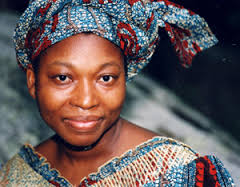
Note the frequently recurring links between same sex love and spiritual power as the rich queer history of Africa emerges….
“African history is replete with examples of both erotic and non-erotic same-sex relationships. For example, the ancient cave paintings of the San people near Guruve in Zimbabwe depict two men engaged in some form of ritual sex. During precolonial times, the “mudoko dako,” or effeminate males among the Langi of northern Uganda were treated as women and could marry men. In Buganda, one of the largest traditional kingdoms in Uganda, it was an open secret that Kabaka (king) Mwanga II, who ruled in the latter half of the 19th century, was gay.

“The vocabulary used to describe same-sex relations in traditional languages, predating colonialism, is further proof of the existence of such relations in precolonial Africa. To name but a few, the Shangaan of southern Africa referred to same-sex relations as “inkotshane” (male-wife); Basotho women in present-day Lesotho engage in socially sanctioned erotic relationships called “motsoalle” (special friend) and in the Wolof language, spoken in Senegal, homosexual men are known as “gor-digen” (men-women).”
(Quoted from http://america.aljazeera.com/opinions/2014/4/homosexuality-africamuseveniugandanigeriaethiopia.html )
“The indigenous cultures of South and East Africa have a long history of homosexuality, transgender behavior, and even same-sex marriage between both men and women. In early seventeenth-century Luanda (the capital of Portuguese Angola), Catholic priests Gaspar Azevereduc and Antonius Sequerius documented third-gender natives known aschibados. The chibados dressed like women, spoke effeminately and married other men “to unite in wrongful lust with them.” More shocking to the priests was the fact that such marriages were honored and even prized among the tribesmen. In a similar record, Portuguese Jesuit Joao dos Santos wrote in 1625 that the chibados of southwestern Africa were “attyred like women, and behave themselves womanly, ashamed to be called men; are also married to men, and esteeme that unnaturale damnation an honor.” In his writings about seventeenth-century Angola, historian Antonio Cardonega mentioned that sodomy was “rampant among the people of Angola. They pursue their impudent and filthy practices dressed as women.” He also stated that the sodomites often served as powerful shamans, were highly esteemed among most Angolan tribes and commonly called “quimbanda.” http://amarawilhelm.wixsite.com/around-the-world/part-8
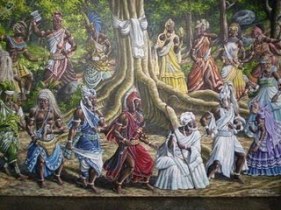
Dagara: “The words gay and lesbian do not exist in the village, but there is the word gatekeeper. Gatekeepers are people who live a life at the edge between the worlds – the world of the village and the world of spirit….Gatekeepers hold keys to other dimensions. They maintain a certain alignment between the spirit world and the world of the village. Without them, the gates to the other world would be shut.” Sobonfu Some, The Spirit of Intimacy (2000)
“The gay person is looked at primarily as a “gatekeeper.” The Earth is looked at, from my tribal perspective, as a very, very delicate machine or consciousness, with high vibrational points, which certain people must be guardians of in order for the tribe to keep its continuity with the gods and with the spirits… Any person who is at this link between this world and the other world experiences a state of vibrational consciousness which is far higher, and far different, from the one that a normal person would experience. This is what makes a gay person gay. This kind of function is…one that people are said to decide on prior to being born. You decide that you will be a gatekeeper before you are born…To then limit gay people to simple sexual orientation is really the worst harm that can be done to a person.” Malidoma Some http://www.menweb.org/somegay.htm
Azande: “the Azande tribe in what is now the Democratic Republic of the Congo in sub-Saharan Africa use their queerness to instill fear and respect in the eyes of their fellow tribespeople. Lesbian Azande women were notorious for being very open and proud of their queerness, wearing it like a badge of honor. This was because, to the Azande, the spiritual potency of women was seen as often more powerful than that of men. Already at a magical disadvantage, Azande men were particularly impotent to the power of queer Azande women. By having sex with each other, lesbians of the tribe were believed to be able to double their spiritual power, making their magical prowess the most powerful in all the tribe. To show off their spiritual might, Azande lesbians sometimes practiced their queer sexuality in public as a way to let everyone know now had 2x the power they once had.” (Tomas Prower https://www.llewellyn.com/journal/article/2696)
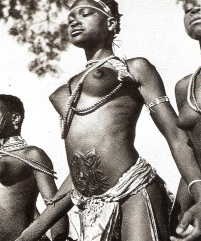
“In southeastern Africa, Bori cults—along with their crossdressing shamans and possession rituals—are still quite common among the Zulu. Shamans are known as inkosi ygbatfazi (“chief of the women”) while ordinary transgenders are called skesana and their masculine partners iqgenge. Zulu warriors traditionally asserted their manhood by substituting boys for women and in the 1890s, Zulu chief Nongoloza Mathebula ordered his bandit-warriors to abstain from women and take on boy-wives instead. After his capture, Nongoloza insisted that the practice had been a longstanding custom among South Africans. Indeed, homosexual marriage was documented among the Zulu, Tsonga and Mpondo migrant workers of South Africa at least since the early nineteenth century. Boy-wives were known by various names such as inkotshane (Zulu),nkhonsthana(Tsonga), tinkonkana (Mpondo)”
(Quoted from http://amarawilhelm.wixsite.com/around-the-world/part-8 )
“Apart from erotic same-sex desire, in precolonial Africa, several other activities were involved in same-sex (or what the colonialists branded “unnatural”) sexuality. For example, the Ndebele and Shona in Zimbabwe, the Azande in Sudan and Congo, the Nupe in Nigeria and the Tutsi in Rwanda and Burundi all engaged in same-sex acts for spiritual rearmament — i.e., as a source of fresh power for their territories. It was also used for ritual purposes.”
(Quoted from africamuseveniugandanigeriaethiopia.html)
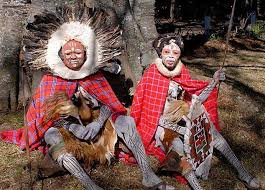
“The Meru tribes of Kenya have a religious leadership role known as mugawe, which involves priests wearing female clothing and hairstyles. In 1973, British ethnologist Rodney Needham noted that the mugawe were often homosexual and sometimes married to other men… In 1987, anthropologist Gill Shepherd reported that homosexuality was relatively common in Kenya, even among Muslims (both male and female). Most Kenyans initially discourage transgender behavior among their children but gradually come to accept it as an inherent part of the child’s spirit (roho) or nature (umbo). Shepherd observed third-gender men, known in Swahili as shoga, who served as passive male prostitutes and wore female clothing, makeup, and flowers at social events such as weddings, where they typically mingled with the “other” women. At more serious events such as funerals and prayer meetings, the shoga would stay with the men and wear men’s attire. Other Swahili terms for homosexual men include basha(dominant male), hanithi(young male partner) and mumemke (man-woman). Lesbians are known as msagaji or msago(“grinders”).”
(Quoted from http://amarawilhelm.wixsite.com/around-the-world/part-8 )
“The Konso of southern Ethiopia have no less than four words for effeminate men, one of which is sagoda and refers to men who never marry, are weak, or who wear skirts. In the mid-1960s, Canadian anthropologist Christopher Hallpike observed one Ethiopian Konso that lived by curing skins (a female occupation) and liked to play the passive role in homosexual relations. In 1957, American anthropologist Simon Messing found male transvestites among the Amhara tribes that were known as wandarwarad (male-female). They lived alone and were considered like brothers to the tribeswomen. The husbands of the women were not at all jealous of the close friendship between their wives and the wandarwarad. Messing reported that the wandarwarad were unusually sensitive and intense in their personal likings. He also found “mannish women” among the Amhara known as wandawande.”
(Quoted from http://amarawilhelm.wixsite.com/around-the-world/part-8 )
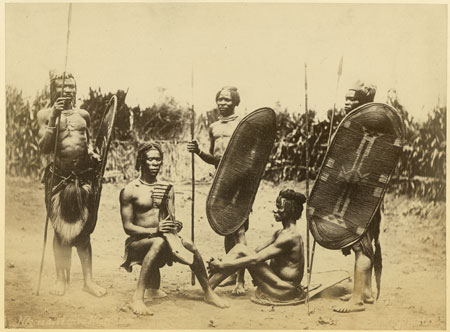
“In the Sudan, traditional Zande culture is well known for its homosexual marriages, even into the 1970s, as reported by British anthropologist Edward Evans-Pritchard in 1971. Some Zande princes preferred men over women and could purchase a desired boy for the price of one spearhead. They would then become husbands to the young man, provide him with beautiful ornaments and address him as badiare (beloved).”http://amarawilhelm.wixsite.com/around-the-world/part-8
The white man exported his homophobia to the whole world, and now in the 21st century western queers are campaigning vigorously to reverse this situation. But of course once again this can feel to people in Africa and elsewhere like colonialism – the enlightened west telling the rest of the world what to do. Instead, we of the west should be going on bended knee to the peoples of Africa, apologising without end for the wanton destruction of ancient cultures, and for the spread of fear and hatred relating to sexuality.
Instead of telling Africa what to do we need to be learning from their history and their example. Just as with the example of the Two-Spirits of North America, and the ancient Goddess priest/esses of the Mediterranean world, the queer history of Africa points to an integral association of same-sex loving and transgender people with the sacred, magical, mysterious dimensions of spirit.
In this spirit, our intention at the Global Radical Faerie Gathering is to invoke healing and rejuvenation through the ancient philosophy and spirit of Ubuntu: “the universal bond of sharing that connects humanity.”
